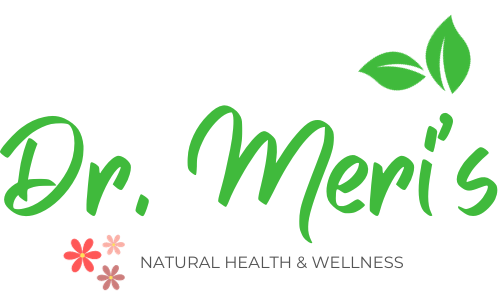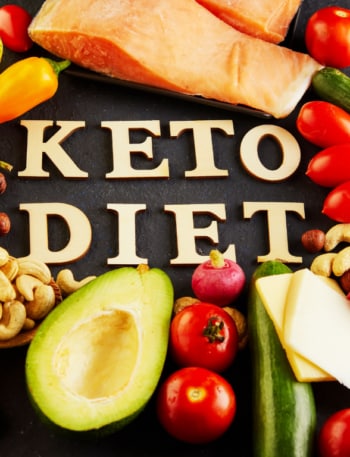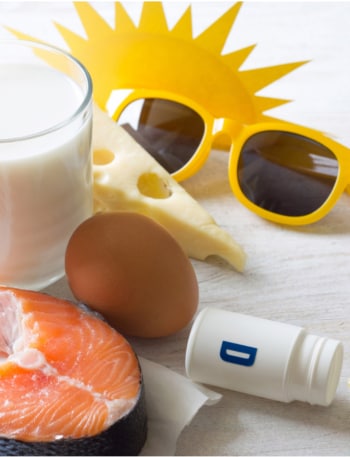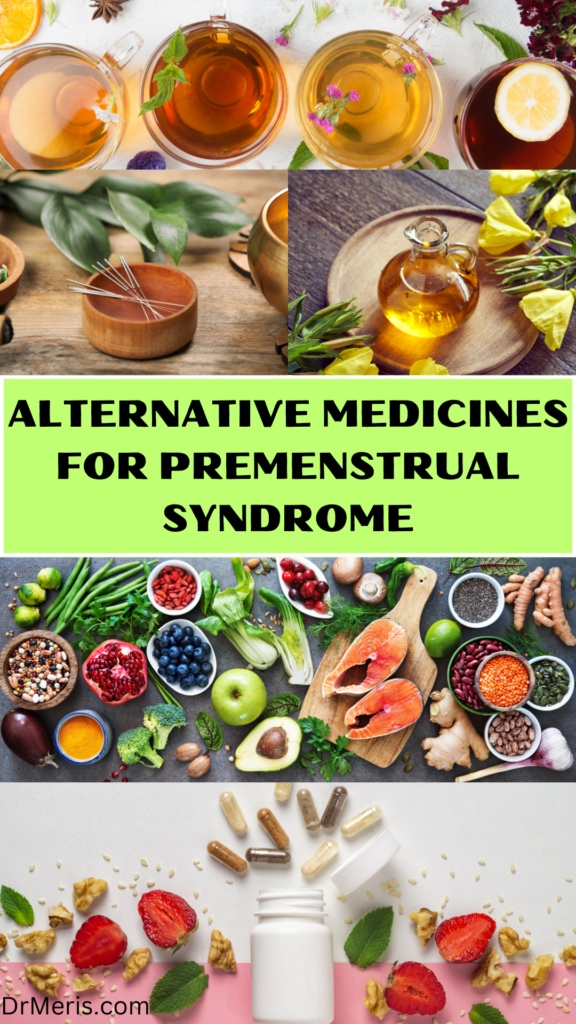
Premenstrual syndrome is one of the most prevalent disorders experienced by women of reproductive age. The effectiveness of pharmaceutical therapies for PMS is limited. Therefore, finding alternative solutions and preventive methods is important.
Background
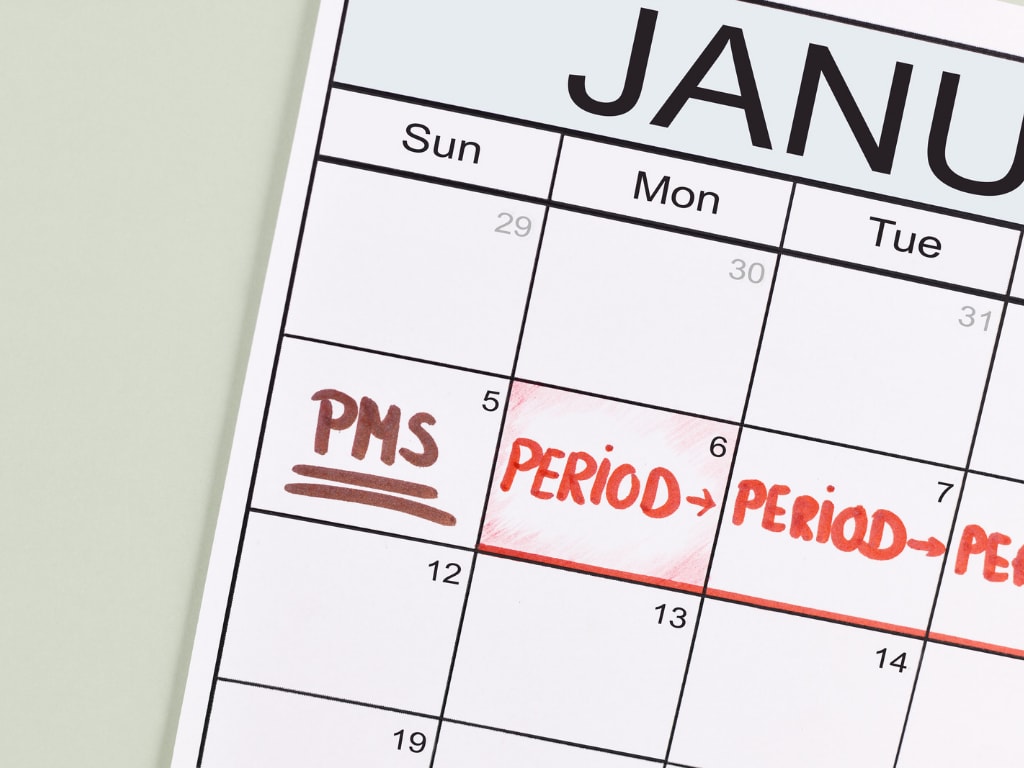
What is premenstrual syndrome (PMS)?
PMS is a collection of mental and physical symptoms that many women experience after ovulation and before the beginning of their monthly cycle. PMS symptoms fade a few days after a woman’s period begins when hormone levels return to normal.
There is no single treatment that is universally acknowledged to be helpful. Many patients frequently seek therapeutic options outside of conventional healthcare.
What are the symptoms of premenstrual syndrome (PMS)?
The symptoms of PMS vary from woman to woman. PMS symptoms might get worse as you approach menopause, also known as perimenopause, in your late 30s or early 40s.1
The most common psychological symptoms are:
- Depression
- Crying
- Difficulty concentrating
- Irritability
- Anxiety
- Restlessness
Premenstrual dysphoric disorder (PMDD) has been linked to more severe psychological symptoms. The physical symptoms include:
- Nausea
- Appetite changes
- Breast tenderness
- Abdominal, back, or low back pain
- Joint pain
- Headaches
- Fatigue
- Bloating
- Constipation or diarrhea
What is the cause of premenstrual syndrome?
Researchers aren’t sure what causes PMS. Hormone fluctuations during the menstrual cycle may play a role.2 These fluctuating hormone levels may impact some women more than others.
Many researchers believe PMS occurs in the days following ovulation because estrogen and progesterone levels drop drastically if you are not pregnant.
The most well-known explanations for PMS are hormonal changes and dietary deficiencies, particularly in vitamin B6, magnesium, and calcium.3
How to treat premenstrual syndrome PMS?

To date, there is no universal medication that helps with PMS. Many women seeking relief frequently seek treatment outside of mainstream medicine.3
Over-the-counter and prescription medications can alleviate some PMS symptoms. Over-the-counter pain medicines, which are widely available, may help alleviate physical symptoms such as cramps, headaches, backaches, and breast tenderness.
PMS is treated with a variety of medications, including ibuprofen and nonsteroidal anti-inflammatory drugs (NSAIDs) like naproxen and acetylsalicylic acid, which is the ingredient in Aspirin.
Some women notice that taking an over-the-counter pain medication right before their period begins reduces the amount of discomfort and bleeding they experience.
If over-the-counter pain relievers do not work, prescription medications may be used:4
Diuretics (“water pills”) may alleviate bloating and breast soreness.
Hormonal birth control may alleviate the physical symptoms of PMS 12, but it may exacerbate other symptoms. You may need to try several different methods of birth control before you discover one that relieves your symptoms.
Anti-anxiety medication may aid in the reduction of anxious feelings.
Antidepressants: The most frequent type of antidepressant used to treat PMS is selective serotonin reuptake inhibitors or SSRIs.5
PRECAUTION: Every medication has risks. Discuss the advantages and disadvantages with your doctor.
What are herbal treatments that may help with premenstrual syndrome (PMS)?
Some studies show that herbal remedies relieve PMS symptoms. Many herbal remedies should not be used in conjunction with other medications.
The following list includes herbal remedies that some women use to alleviate PMS symptoms.
Black cohosh (Actaea racemose)
Black cohosh is a medicinal root that is also known as black snakeroot or bugbane. Underground stems and roots of black cohosh are used fresh or dried to make tea, capsules, tablets, or liquid extracts.
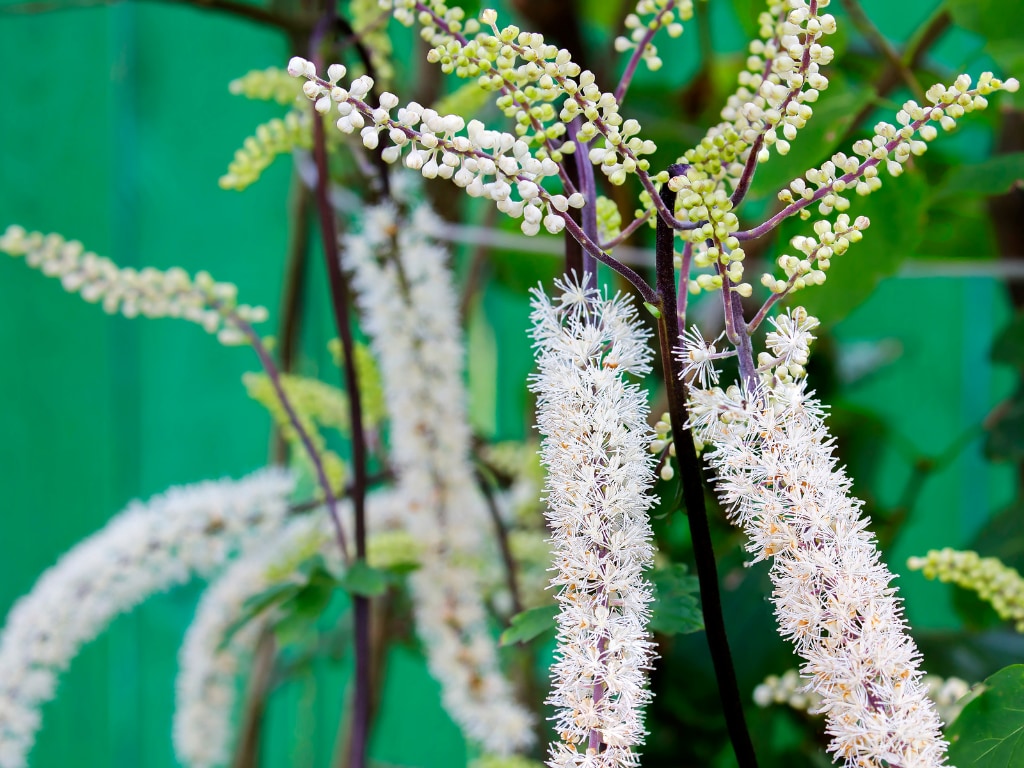
It is used to treat hormonal symptoms in women, such as premenstrual syndrome (PMS), menstrual cramps, and menopausal symptoms. However, studies on black cohosh have yielded conflicting results.
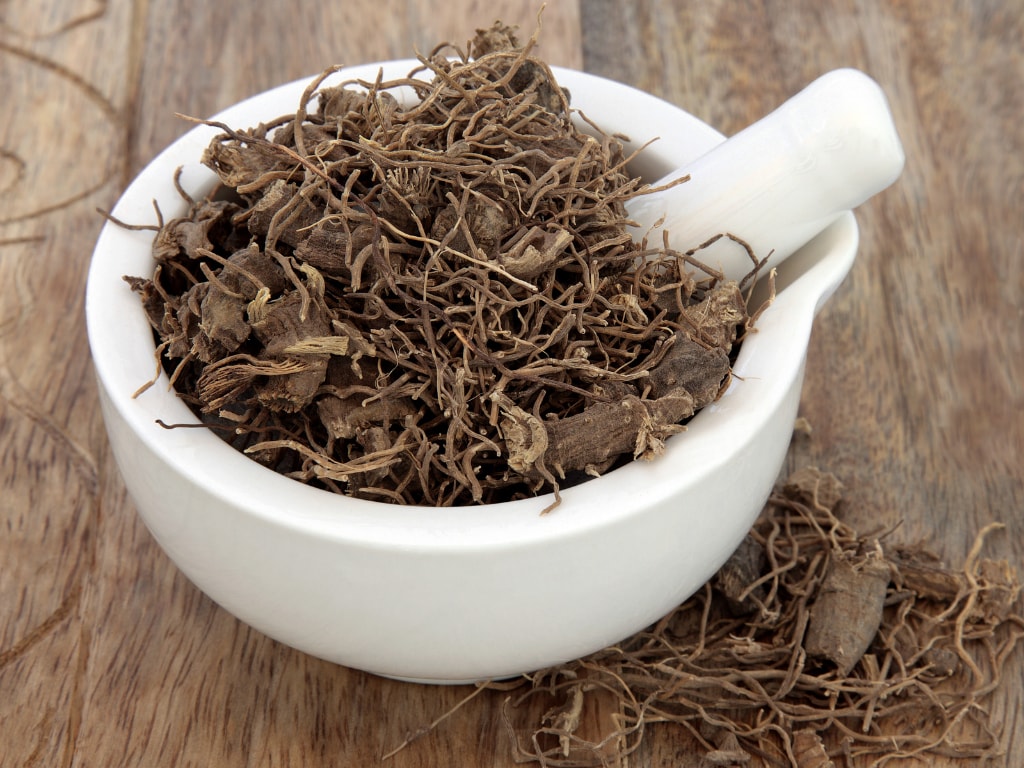
Chamomile
Chamomile is the common name for several daisy-like plants in the Asteraceae family. Matricaria chamomilla and Chamaemelum nobile are two of the species that are commonly used to make herbal infusions.
According to research, the chemical components of chamomile medication have anti-inflammatory, antispasmodic, sedative, and anti-anxiety qualities that have a major impact on women who suffer from PMS and experience painful periods, anxiety, and psychological issues.6

Chaste tree extracts (Vitex agnus castus)
Chaster tree (Vitex agnus cactus), also known as chasterberry. Some women use liquid extracts or pills of dried ripe chasterberry to alleviate PMS symptoms.
VAC preparations may reduce PMS symptoms: women taking VAC were 2.57 times more likely to experience symptom remission than those receiving a placebo.7
According to some researchers, the fruit extract Vitex agnus-castus is the only herbal treatment that decreased PMS-related mood swings and irritability.8
Women taking hormonal birth control or hormone therapy for menopause symptoms should not take chasteberry.
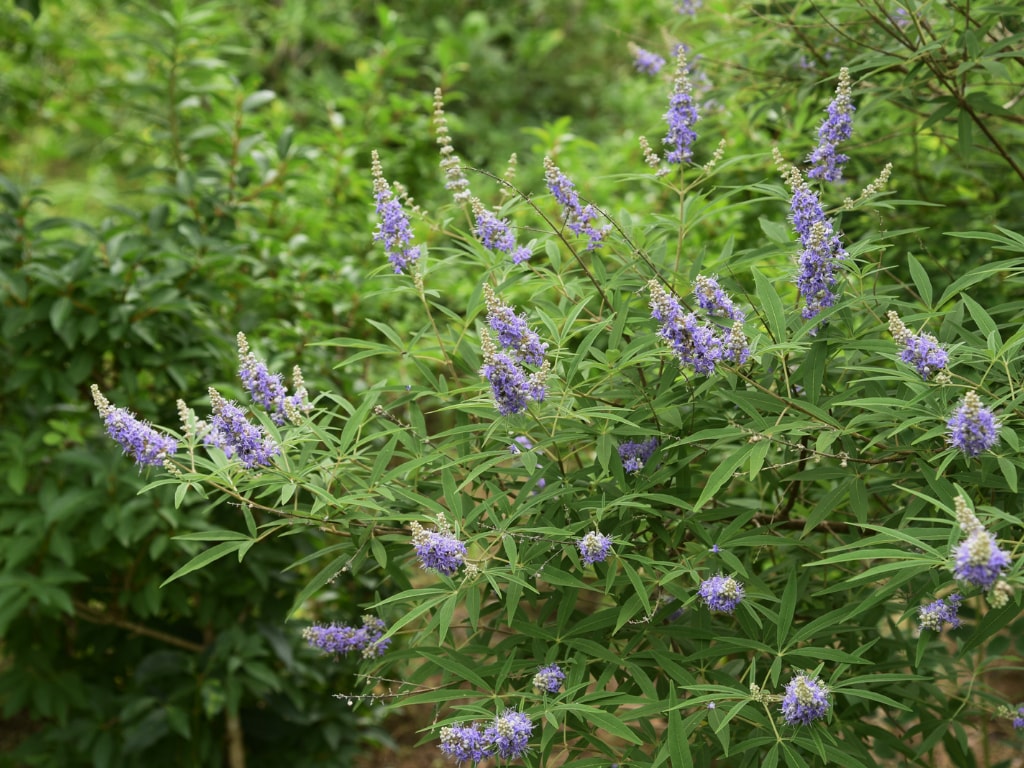
Curcumin
Curcumin is a brilliant yellow substance from Curcuma longa plants. Turmeric’s main bioactive ingredient is curcumin, which is anti-inflammatory.
Various scientific studies have recognized that curcumin can control neurotransmitters (norepinephrine, dopamine, serotonin, and BDNF) accountable for behavior and mood regulation.9
Furthermore, curcumin significantly reduced the severity of mood, behavioral, and physical symptoms of premenstrual syndrome.10
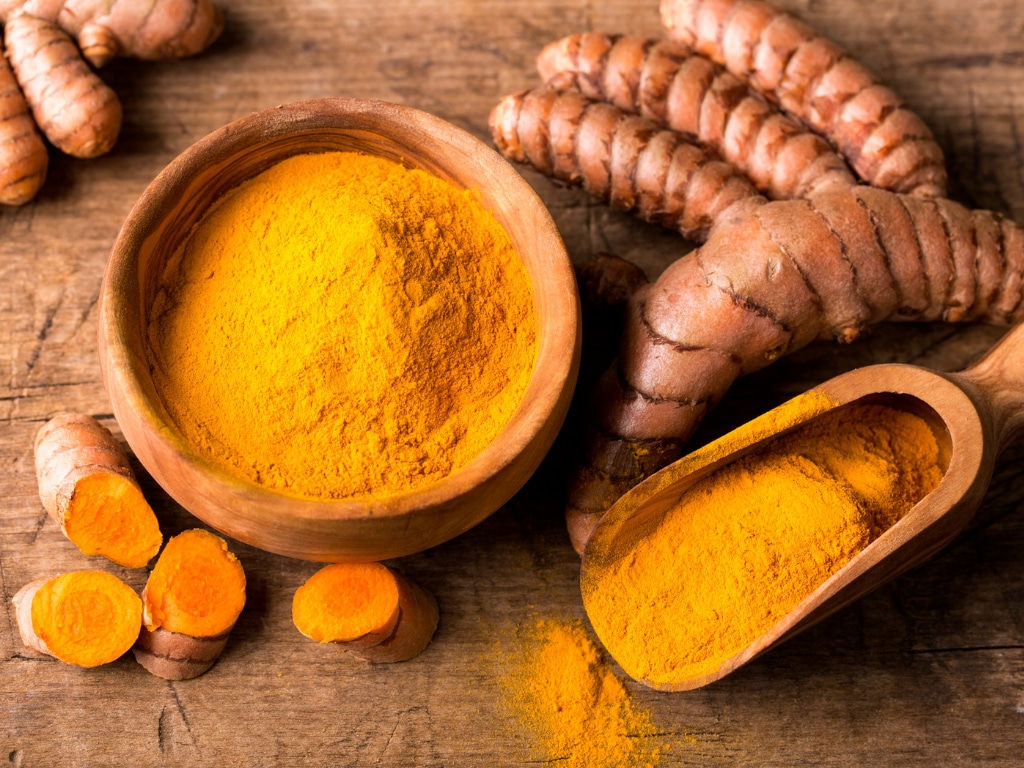
Dandelion leaf (Taraxacum officinale)
Dandelion leaf may treat the symptoms of fluid retention that are prevalent before menstruation. It is potassium-sparing, in contrast to most medications.
The recommended dosage for the fluid extract is 4 to 10 mL three times per day, and for the dried leaf, it is 4 to 10 g three times per day by infusion.11
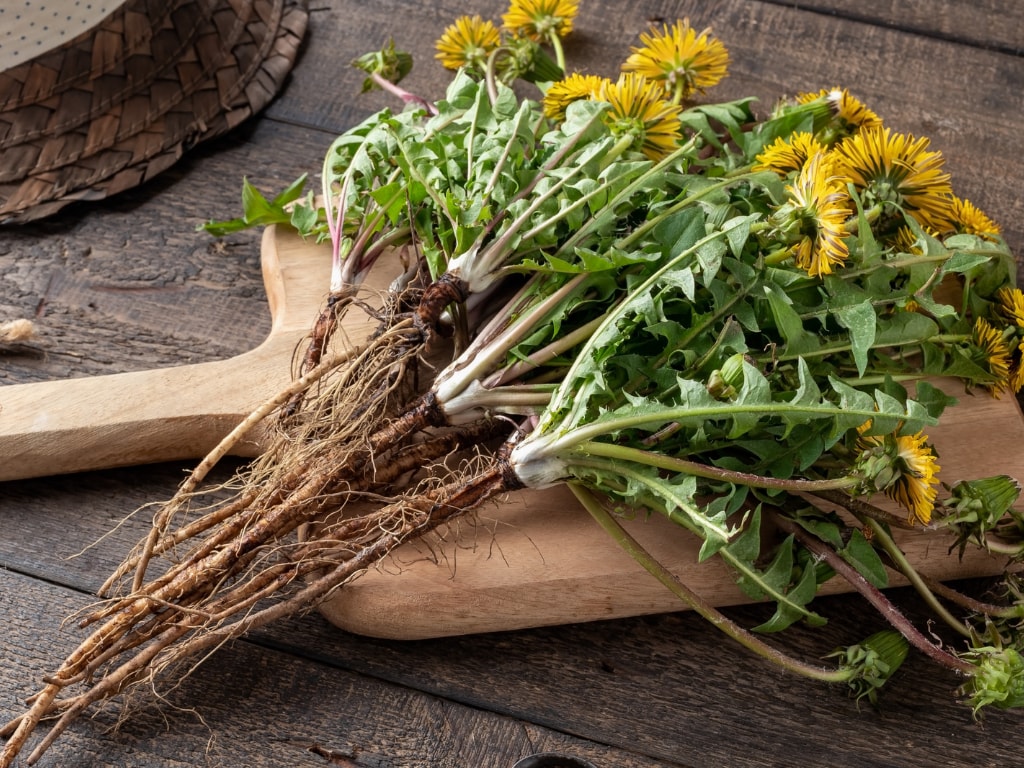
St. John’s Wort (Hypericum perforatum)
St. John’s wort (Hypericum perforatum) is an herbal preparation that has been shown by some studies to be effective in the treatment of mild to moderate depressive symptoms.
This herbal remedy appears to increase serotonin levels in the brain, which is what conventional antidepressants, including selective serotonin reuptake inhibitors (SSRIs), do. It may help ease physical and emotional symptoms of PMS. According to one study, symptom severity was reduced by 50%.12
In another study, daily treatment with Hypericum perforatum was more beneficial than placebo for the most frequent physical and behavioral symptoms associated with PMS.13
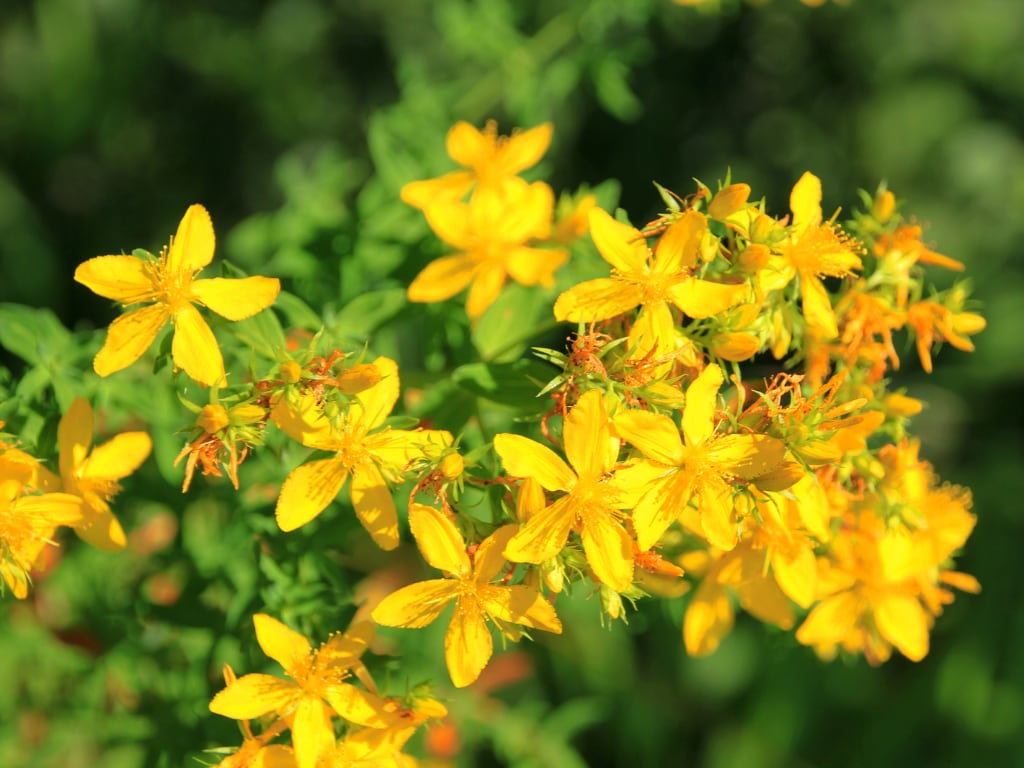
PRECAUTION: St. John’s wort may cause sun sensitivity, skin rashes, mental confusion, and increased infertility.
Saffron (Crocus sativus)
Saffron is a spice obtained from the flower of Crocus sativus, also known as the “saffron crocus”. The vibrant crimson stigma and styles, known as threads, are collected and dried for use in food, mostly as a spice and coloring agent.
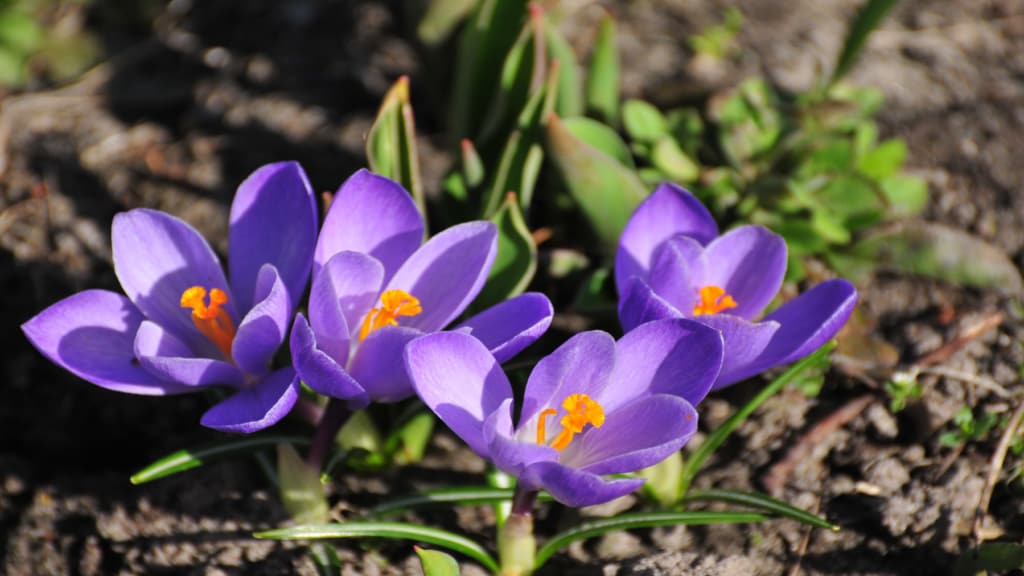
Saffron is a potent spice that is high in antioxidants. It has been linked to a variety of health advantages, including digestive aid, increased mood, and sexual stimulation, as well as weight loss easing menstruation, and reduced PMS symptoms.
Oral saffron consumption of 15 mg twice daily for two menstrual cycles resulted in a 50% reduction in the severity of PMS symptoms in 75% of individuals and a 50% reduction in depression symptoms in 60% of individuals in the intervention group.14
The consumption of saffron reduced the severity of PMS symptoms in students suffering from the syndrome.15
Ginkgo (Ginkgo biloba)
Ginkgo, also known as the maidenhair tree, is a species of Ginkgo biloba. It is is high in antioxidants and has anti-inflammatory properties.
Single trials supported the use of Gingko biloba. According to preliminary research, ginkgo may help treat both the physical and psychological symptoms of premenstrual syndrome (PMS).
An older study of 85 college students found that consuming ginkgo reduced PMS symptoms by 23%.16 Interestingly, in this study, the placebo group also experienced a slight reduction in PMS symptoms, though it was much lower, at around 8.8%.
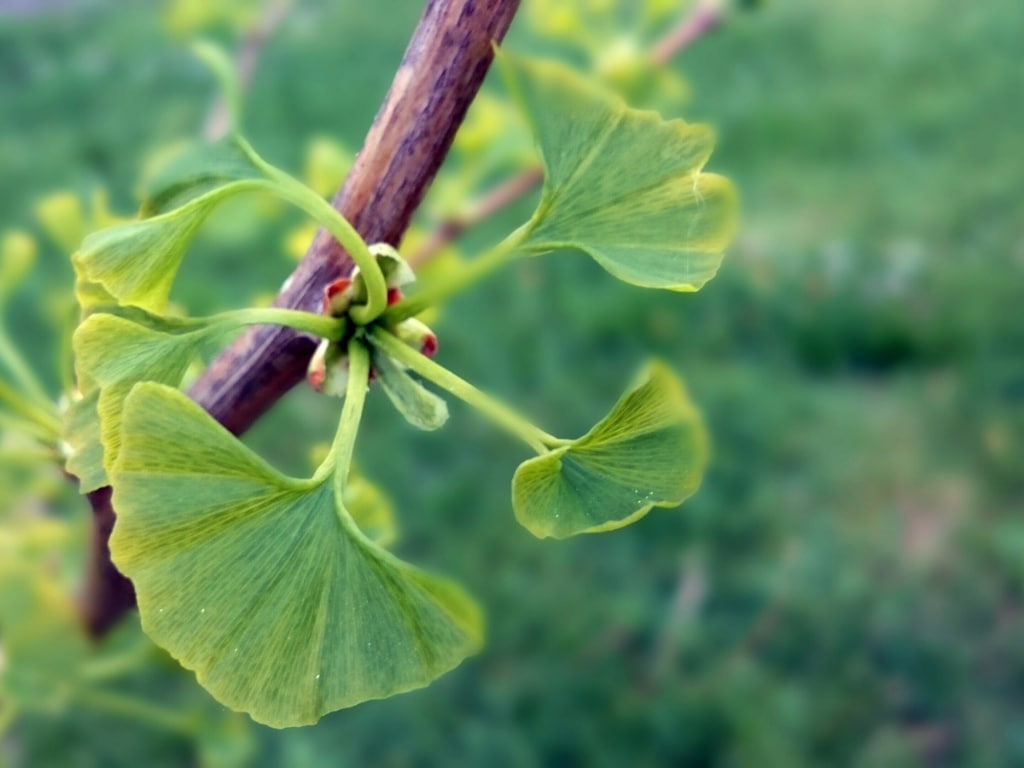
Evening primrose (Oenothera biennis) oil
The common evening primrose Oenothera biennis is a yellow-flowered plant. Evening primrose oil is often supplied in capsule form, derived from plant seeds. Gamma-linolenic acid (GLA) is a fatty acid found in the supplement.
Evening primrose oil is taken orally to treat a wide range of conditions.
According to a 2019 study, evening primrose oil may be effective in treating PMS symptoms such as irritability, breast swelling, acne, and bloating.17
Gamma-linolenic acid (GLA) is found in evening primrose oil. GLA is an omega-6 essential fatty acid with anti-inflammatory properties.
Researchers believe that some people suffer from PMS because their bodies are sensitive to prolactin levels. The body converts GLA to a substance (prostaglandin E1) that may help prevent prolactin from triggering PMS.
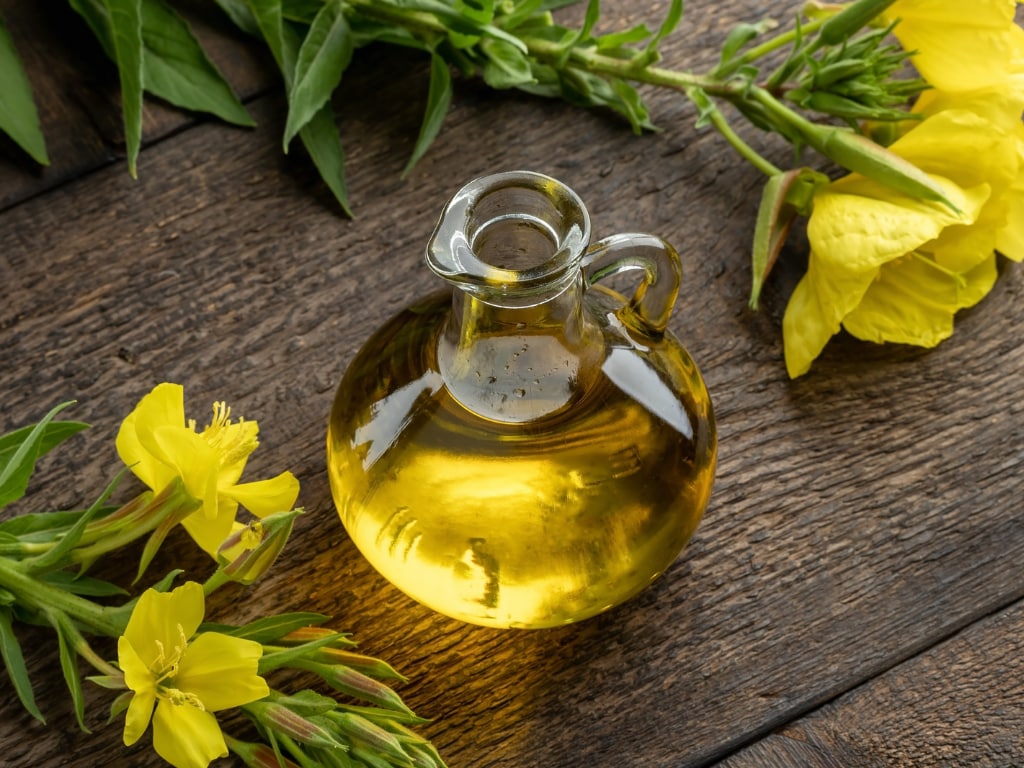
PRECAUTIONS
Evening primrose oil may increase the likelihood of bruising and bleeding. If you have a bleeding issue, avoid using it.
Evening primrose oil may increase the likelihood of seizures in those who have epilepsy or another seizure disorder.
Evening primrose oil may increase the risk of bleeding during or after surgery. Stop using it at least two weeks before your operation.
Valerian (Valeriana officinalis)
Valerian (Valeriana officinalis) is a plant native to Europe and Asia. The root has traditionally been used as a sedative. The root extract may alleviate premenstrual syndrome’s emotional, physical, and behavioral symptoms.18

Dietary supplements that may help with premenstrual syndrome
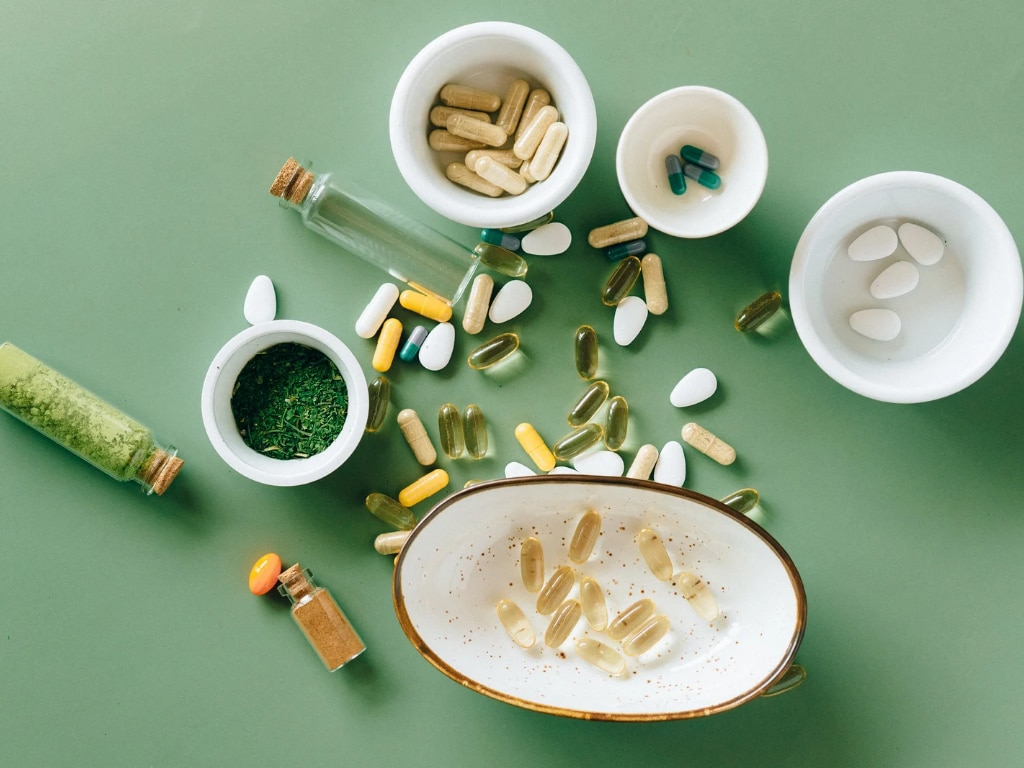
Calcium and vitamin D
Calcium citrate, 500 to 1,000 mg daily, and vitamin D, 400 IU daily. Several studies suggest that calcium may reduce PMS symptoms. Calcium and vitamin D are also good for your bones.19
Calcium has been shown in two clinical studies to relieve PMS symptoms such as irritability, depression, anxiety, social withdrawal, headache, and cramps.20
A study found that taking 500 mg of calcium daily was effective in reducing PMS symptoms.21
The majority of studies found that not only are serum calcium levels lower in PMS patients, but calcium supplementation can significantly reduce the incidence of PMS and its associated symptoms.22
Pyridoxine (vitamin B6)
Pyridoxine (vitamin B6) has also been reported to help with PMS.23
Magnesium
Women suffering from premenstrual syndrome (PMS) have lower magnesium (Mg) levels.
Magnesium supplementation may help avoid dysmenorrhea, PMS, and menstrual migraines.24
Combining magnesium and vitamin B6 may reduce premenstrual stress.25,26 Vitamin B6 can effectively reduce anxiety in older women.25
Omega-3
Omega-3 fatty acids, such as fish oils, 1 to 2 capsules, or 1 tablespoon of oil daily, to help reduce inflammation.27
Fish oils may increase the risk of bleeding. If you take blood-thinning medication such as warfarin (Coumadin) or aspirin, talk to your doctor before taking fish oil.
Zinc
Zinc have numerous health benefits, including anti-inflammatory, antioxidant, and antidepressant properties. Overall, zinc supplementation for 12 weeks improved physical and psychological symptoms, total antioxidant capacity, and brain-derived neurotrophic factor in women with PMS.28
A multivitamin daily, containing the antioxidant vitamins A, C, and E, the B-complex vitamins, and trace minerals such as magnesium, calcium, zinc, and selenium may also help.
Does acupuncture help with premenstrual syndrome?
Acupuncturists often treat PMS. Acupuncture appears to be promising for PMS symptom relief in women. However, scientific evidence for the use of acupuncture for PMS is lacking.29
Traditional Chinese medicine acupuncture was administered to a 36-year-old woman. Five days before the onset of her menstrual period, she was to ingest a B-100 complex twice a day and 400 mg of magnesium citrate, 1000 mg of flaxseed oil, and 1000 mg of turmeric 3 times a day. Mindfulness meditation was encouraged twice a day for 10 minutes to reduce stress.30
After 12 treatments over 3 months, This patient with PMS symptoms positively responded to a multimodal approach using traditional Chinese medicine–style acupuncture, dietary supplements, and mindfulness meditation.30
PRECAUTIONS
- While people have been using herbs for health for centuries, the majority of them have not been thoroughly researched. It doesn’t mean they don’t help with PMS, but the data and safety are unclear.
- Not all herbs and supplements are suitable for everyone. Herbs and minerals can be beneficial to your body, but they can also have negative side effects.
- Some herbs and supplements have the potential to interact with medicines and other supplements. They may interact with other medications you take, preventing them from working properly or causing dangerous side effects.
- Talk to your healthcare provider before taking any of these supplements.
What is the lifestyle advice for premenstrual syndrome (PMS)?
The majority of women who experience PMS don’t have particularly severe symptoms. In milder episodes of PMS, lifestyle changes and regular exercise may have a more pronounced favorable effect.31
Here are some methods found useful by many women to cope with PMS:
- Getting enough sleep
- Minimizing stress
- Meditating and practicing relaxation techniques
- Include physical activity for most days of the week, as it may help with fluid status and mood.
- Eat a balanced diet and avoid processed foods.
What to eat and what not to eat with premenstrual syndrome?
- Choose calcium and vitamin D-rich meals
- Include vitamin B6 sources
- Avoid caffeine, tobacco, and alcohol
- Avoid salt to assist in reducing bloating and fluid retention.
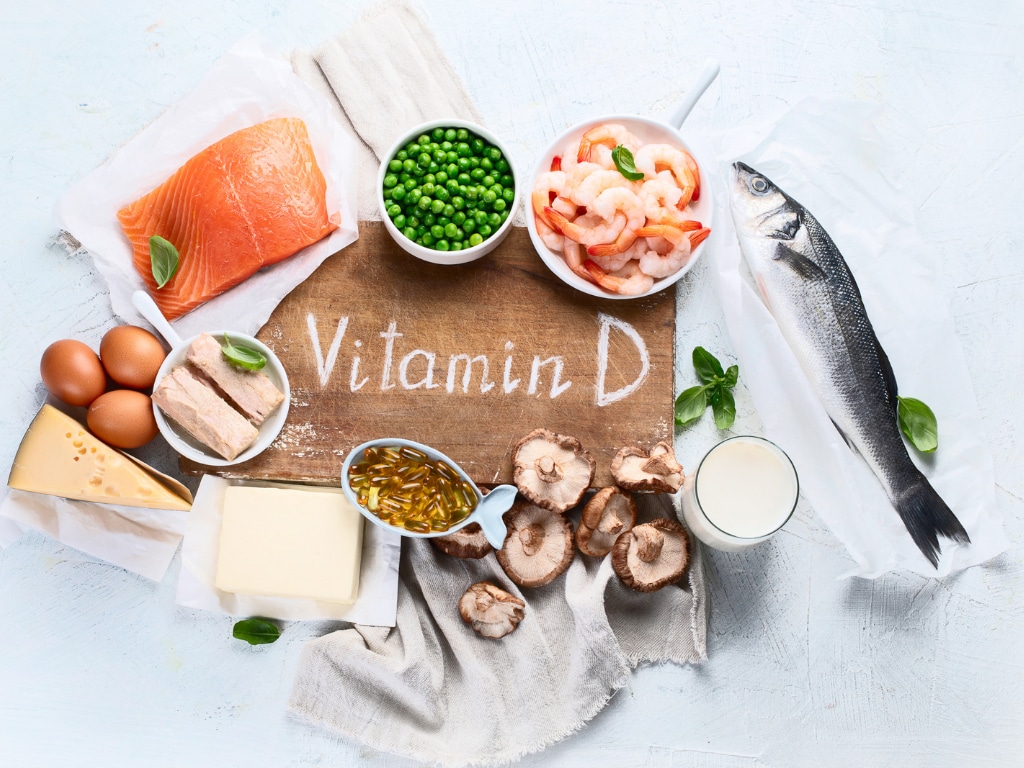
Research found that eating fruit was connected with a lower likelihood of behavioral symptoms while smoking and eating caloric items (rich in fat, sugar, and salt) were identified as important risk factors for PMS.32

The majority of these lifestyle modifications have not been examined in high-caliber research studies to determine their impact on PMS. Yet that does not imply that they are ineffective.3
Final thoughts
Several studies have demonstrated that herbal supplements and micronutrients are useful in lowering PMS. Some researchers believe that there is little and restricted data to support the usage of herbal medicines as an effective treatment.
It is important to consult first your healthcare provider before taking any treatment option.
Changing your lifestyle and diet appear to be essential measures in the reduction or management of PMS.
Finally, every woman’s struggle with PMS is unique. To determine whether any changes or treatment have affected the symptoms, you can keep a journal of the symptoms that you experience as well as any remedies and/or lifestyle that you try over a few menstrual cycles.
References
1. Pinkerton, J. V., Guico-Pabia, C. J. & Taylor, H. S. Menstrual cycle-related exacerbation of disease. American journal of obstetrics and gynecology 202, 221-231, (2010).
2. Dickerson, L. M., Mazyck, P. J. & Hunter, M. H. Premenstrual syndrome. American family physician 67, 1743-1752 (2003).
3. Siminiuc, R. & Ţurcanu, D. Impact of nutritional diet therapy on premenstrual syndrome. Frontiers in nutrition 10, 1079417, (2023).
4. Rapkin, A. A review of treatment of premenstrual syndrome and premenstrual dysphoric disorder. Psychoneuroendocrinology 28 Suppl 3, 39-53, (2003).
5. Marjoribanks, J., Brown, J., O’Brien, P. M. & Wyatt, K. Selective serotonin reuptake inhibitors for premenstrual syndrome. The Cochrane database of systematic reviews 2013, Cd001396, (2013).
6. Khalesi, Z. B., Beiranvand, S. P. & Bokaie, M. Efficacy of Chamomile in the Treatment of Premenstrual Syndrome: A Systematic Review. Journal of pharmacopuncture 22, 204-209, (2019).
7. Csupor, D. et al. Vitex agnus-castus in premenstrual syndrome: A meta-analysis of double-blind randomised controlled trials. Complementary therapies in medicine 47, 102190, (2019).
8. Girman, A., Lee, R. & Kligler, B. An integrative medicine approach to premenstrual syndrome. American journal of obstetrics and gynecology 188, S56-65, (2003).
9. Sultana, A. et al. A Systematic Review and Meta-Analysis of Premenstrual Syndrome with Special Emphasis on Herbal Medicine and Nutritional Supplements. Pharmaceuticals (Basel) 15, (2022).
10. Khayat, S. et al. Curcumin attenuates severity of premenstrual syndrome symptoms: A randomized, double-blind, placebo-controlled trial. Complementary therapies in medicine 23, 318-324, doi:10.1016/j.ctim.2015.04.001 (2015).
11. Romm, A.J., Clare, B., Stansbury, J.E., Ryan, L., Trickey, R., Lee, L., & Hywood, A.J. CHAPTER 5 – Menstrual Wellness and Menstrual Problems. (2010)
12. Stevinson, C. & Ernst, E. A pilot study of Hypericum perforatum for the treatment of premenstrual syndrome. BJOG : an international journal of obstetrics and gynaecology 107, 870-876, (2000).
13. Canning, S. et al. The efficacy of Hypericum perforatum (St John’s wort) for the treatment of premenstrual syndrome: a randomized, double-blind, placebo-controlled trial. CNS drugs 24, 207-225, (2010).
14. Agha-Hosseini, M. et al. Crocus sativus L. (saffron) in the treatment of premenstrual syndrome: a double-blind, randomized and placebo-controlled trial. BJOG : an international journal of obstetrics and gynaecology 115, 515-519, (2008).
15. Pirdadeh Beiranvand, S. et al. The effect of Crocus sativus (saffron) on the severity of premenstrual syndrome. European Journal of Integrative Medicine 8, 55-61, (2016).
16. Ozgoli, G., Selselei, E. A., Mojab, F. & Majd, H. A. A randomized, placebo-controlled trial of Ginkgo biloba L. in treatment of premenstrual syndrome. Journal of alternative and complementary medicine (New York, N.Y.) 15, 845-851, (2009).
17. Mahboubi, M. Evening Primrose (Oenothera biennis) Oil in Management of Female Ailments. Journal of menopausal medicine 25, 74-82, doi:10.6118/jmm.18190 (2019).
18. Behboodi Moghadam, Z., Rezaei, E., Shirood Gholami, R., Kheirkhah, M. & Haghani, H. The effect of Valerian root extract on the severity of pre menstrual syndrome symptoms. Journal of traditional and complementary medicine 6, 309-315, (2016).
19. Bertone-Johnson, E. R. et al. Calcium and vitamin D intake and risk of incident premenstrual syndrome. Archives of internal medicine 165, 1246-1252, (2005).
20. Thys-Jacobs, S., Starkey, P., Bernstein, D. & Tian, J. Calcium carbonate and the premenstrual syndrome: effects on premenstrual and menstrual symptoms. Premenstrual Syndrome Study Group. American journal of obstetrics and gynecology 179, 444-452, (1998).
21. Shobeiri, F., Araste, F. E., Ebrahimi, R., Jenabi, E. & Nazari, M. Effect of calcium on premenstrual syndrome: A double-blind randomized clinical trial. Obstetrics & gynecology science 60, 100-105, (2017).
22. Arab, A., Rafie, N., Askari, G. & Taghiabadi, M. Beneficial Role of Calcium in Premenstrual Syndrome: A Systematic Review of Current Literature. International journal of preventive medicine 11, 156, (2020).
23. Retallick-Brown, H., Blampied, N. & Rucklidge, J. J. A Pilot Randomized Treatment-Controlled Trial Comparing Vitamin B6 with Broad-Spectrum Micronutrients for Premenstrual Syndrome. Journal of alternative and complementary medicine (New York, N.Y.) 26, 88-97, (2020).
24. Parazzini, F., Di Martino, M. & Pellegrino, P. Magnesium in the gynecological practice: a literature review. Magnesium research 30, 1-7, (2017).
25. Fathizadeh, N., Ebrahimi, E., Valiani, M., Tavakoli, N. & Yar, M. H. Evaluating the effect of magnesium and magnesium plus vitamin B6 supplement on the severity of premenstrual syndrome. Iranian journal of nursing and midwifery research 15, 401-405 (2010).
26. McCabe, D., Lisy, K., Lockwood, C. & Colbeck, M. The impact of essential fatty acid, B vitamins, vitamin C, magnesium and zinc supplementation on stress levels in women: a systematic review. JBI database of systematic reviews and implementation reports 15, 402-453, (2017).
27. Sohrabi, N., Kashanian, M., Ghafoori, S. S. & Malakouti, S. K. Evaluation of the effect of omega-3 fatty acids in the treatment of premenstrual syndrome: “a pilot trial”. Complementary therapies in medicine 21, 141-146, (2013).
28. Jafari, F., Amani, R. & Tarrahi, M. J. Effect of Zinc Supplementation on Physical and Psychological Symptoms, Biomarkers of Inflammation, Oxidative Stress, and Brain-Derived Neurotrophic Factor in Young Women with Premenstrual Syndrome: a Randomized, Double-Blind, Placebo-Controlled Trial. Biological trace element research 194, 89-95, doi:10.1007/s12011-019-01757-9 (2020).
29. Kim, S. Y., Park, H. J., Lee, H. & Lee, H. Acupuncture for premenstrual syndrome: a systematic review and meta-analysis of randomised controlled trials. BJOG : an international journal of obstetrics and gynaecology 118, 899-915, (2011).
30. Martin, B. R. & Woodruff, J. Management of a Patient With Premenstrual Syndrome Using Acupuncture, Supplements, and Meditation: A Case Report. Journal of chiropractic medicine 22, 222-229, (2023).
31. Dilbaz, B. & Aksan, A. Premenstrual syndrome, a common but underrated entity: review of the clinical literature. Journal of the Turkish German Gynecological Association 22, 139-148, (2021).
32. Hashim, M. S. et al. Premenstrual Syndrome Is Associated with Dietary and Lifestyle Behaviors among University Students: A Cross-Sectional Study from Sharjah, UAE. Nutrients 11, (2019).
Sign Up for Our Email List
Get our latest articles, healthy recipes, tips, and exclusive deals delivered straight to your inbox with our newsletter.
We won't send you spam. Unsubscribe at any time.
